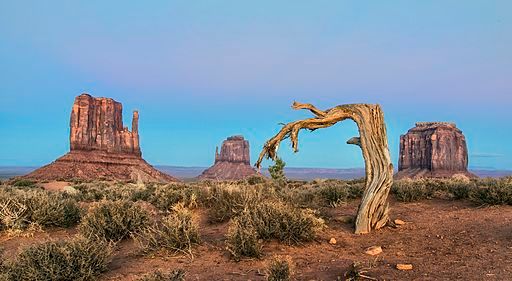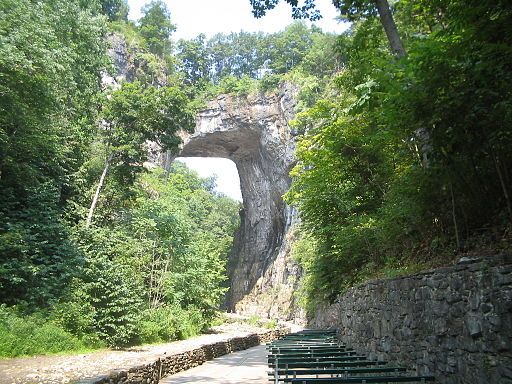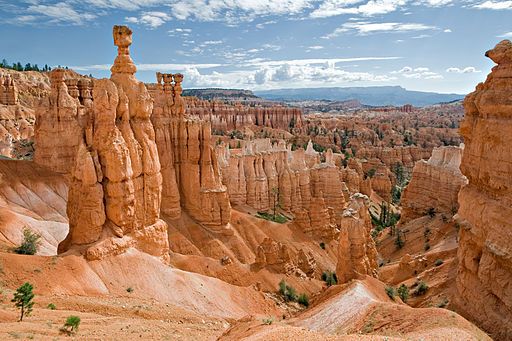5 Incredible Rock Formations in the U.S.
Long before the Revolutionary War was won, long before our founding fathers penned the Declaration of Independence, before the occupants of the Mayflower set foot on the sands of the New World, and even before the first humans to settle the continent crossed the land bridge that once spanned the Bering Strait, the wind, water, and sun had been sculpting the contours of the continents terrain into sometimes unusual and fascinating geological formations. Given the vastness and variance of the continental United States terrain, it should be no surprise that there are a wide variety of interesting rock formations with it. Here are a few of the most fascinating that the nation has to offer:
MONUMENT VALLEY

Near the 'Four Corners' region where the borders of Colorado, Nevada, New Mexico, and Utah intersect is the vast collection of enormous sandstone buttes known as Monument Valley. Technically, Monument Valley is not a single rock formation, but rather a group of formations in relatively close proximity, many of which are named simply for their resemblance to other things, like 'The Totem Pole,' 'The Thumb,' 'Camel Butte,' and 'The Mittens.' In addition to their enormous size (The highest of the buttes reaches 1,000 ft. above the valley floor below.), part of what makes Monument Valley so fascinating is the clear stratification visible when viewing many of the buttes; the rock formations are composed of three easily visible layers, each distinguished from the others by differences in color and texture. The region's rugged, quintessentially American beauty has led to its appearance in a long list of feature films, from 1939's Stagecoach, starring John Wayne, to the more recent Back to the Future III, and Forrest Gump.
THE WAVE

Approximately 180 miles west of Monument Valley is the otherworldly landscape known as The Wave. This surrealistic rock formation is located in the Coyote Buttes area of Paria Canyon-Vermillion Cliffs National Monument, along the border of Arizona and Utah. Consisting of two intersecting U-shaped troughs, the undulating contours of The Wave are the result of millions of years of water and wind erosion on the region's Navajo Sandstone. Because of the fragility of the rock formations, as well as their scientific and cultural value, the Bureau of Land Management heavily restricts access to the area, issuing only twenty permits for entry per day. Access is difficult even for those that manage to obtain a permit, due to the intense heat and otherwise harsh conditions of the area, as well as the lack of any established trail leading to the formation. For those lucky enough to behold it though, viewing this seemingly alien landscape firsthand is a once-in-a-lifetime experience.
NATURAL BRIDGE

On the other side of the nation in Central Virginia is an equally fascinating, if slightly less exotic formation known as Natural Bridge. As the name suggests, Natural Bridge is a 250 ft. tall natural arch that forms a bridge of sorts over Cedar Creek. It was this same creek that -- over the course of millions of years -- carved its way through the limestone that composes much of the surrounding mountainous terrain. Geologists believe that the bridge is likely the last remnant of the roof of a cave or tunnel through which the stream flowed. In addition to the inherent allure of the unusual landmark, some historians believe that a young George Washington encountered the site in 1750 while surveying the area for Thomas Fairfax, the lord that administered that particular section of colonial Virginia. A set of initials, 'G.W.,' carved about 23 feet up the bridge's wall support, but don't definitively corroborate this version of events. Regardless, Natural Bridge is a sight to behold.
ANTELOPE CANYON

Returning to the Western United States, we now move on to Antelope Canyon, near Page, Arizona. The canyon -- both the most visited and most photographed slot canyon in the American Southwest -- is the product of flash flooding during the area's monsoon season. These floodwaters runs into the large basin that sits above the slot canyon segments, gathering both speed as well as some of the previously eroded from the Navajo Sandstone. Both this speed and the additional sand helped the floodwaters to carve the flowing contours and deep, narrow corridors that epitomize Antelope Canyon over many, many, years. Those same seasonal floods still occur in Antelope Canyon, occasionally prompting park officials to close sections of the attraction, and likely contributing little by little to the further erosion and sculpting of the formation. Antelope Canyon is located on Navajo Land, and was closed to outside visitors until as recently as 1997, when the Navajo Nation capitalized on the location as a lucrative source of tourism revenue.
BRYCE CANYON

Bryce Canyon, located in Southern Utah, is a unique geological spectacle. The strange stone spires that populate the sides of the canyon are known as 'hoodoos,' and are more abundant in the Bryce Canyon than anywhere else in the world. These unusual, totem pole-like structures are composed of sedimentary rock and have been formed over millions of years of erosion in areas where a deep layer of soft rock is blanketed by a thinner layer of hard rock. This hard rock forms a cap, protecting a conical column of the softer rock underneath from the erosive forces above. Because of the various minerals found within the soft, lower layers of Bryce Canyon's hoodoos, many display layers of different colors along their height. Bryce Canyon National park includes trails overlooking the canyon rim, as well as trails that descend into the canyon, each presenting a slightly different point of view from which to behold the strange, beautiful formations.
Whether you're a geology buff or not, each of these incredible rock formations is worth seeing. Even without an understanding of the scientific importance of these sites, their aesthetic beauty can be appreciated by anyone, even -- and maybe especially -- children. Before you plan your next vacation, consider visiting one of the United States's many fascinating geological attractions.